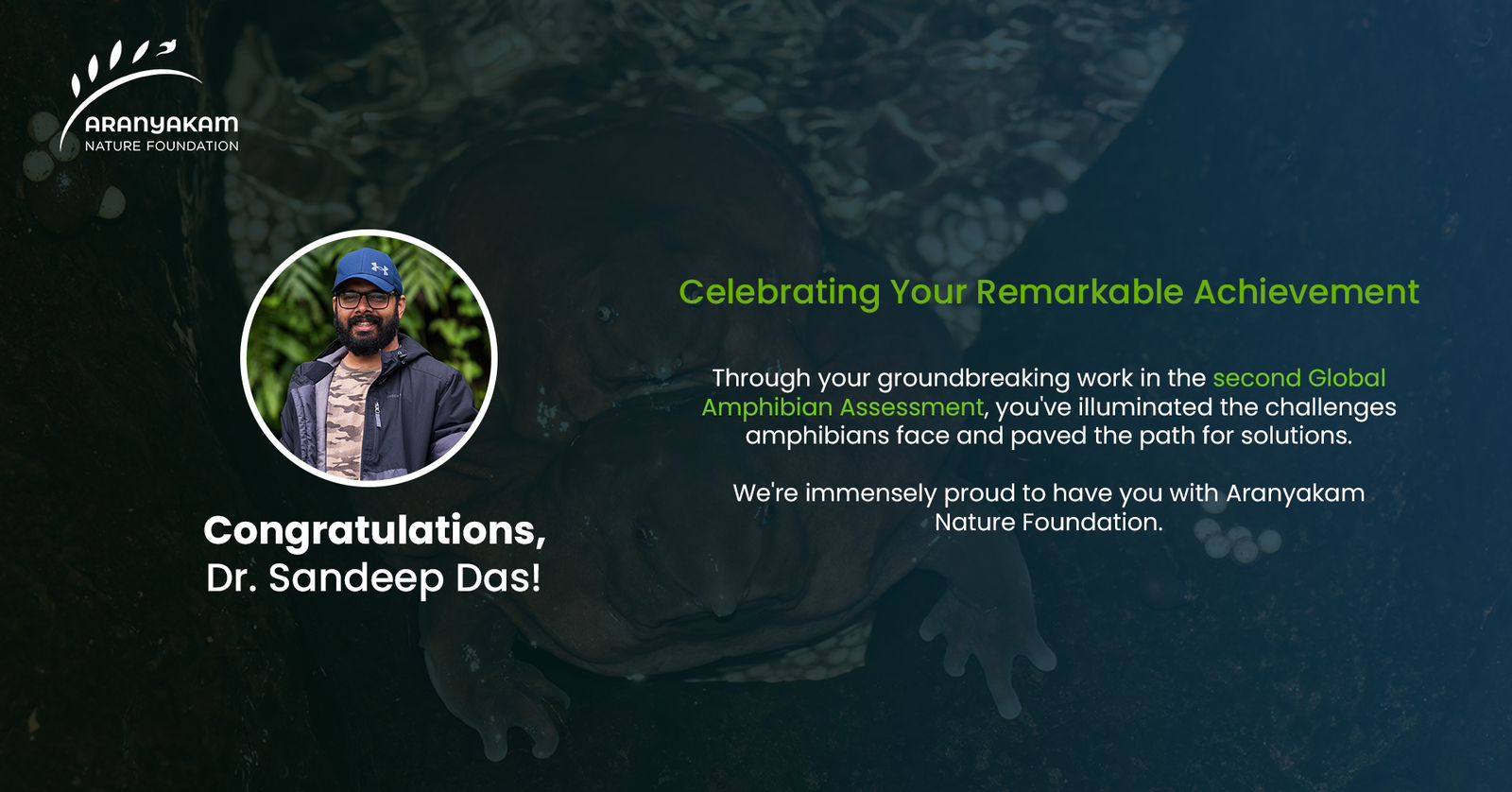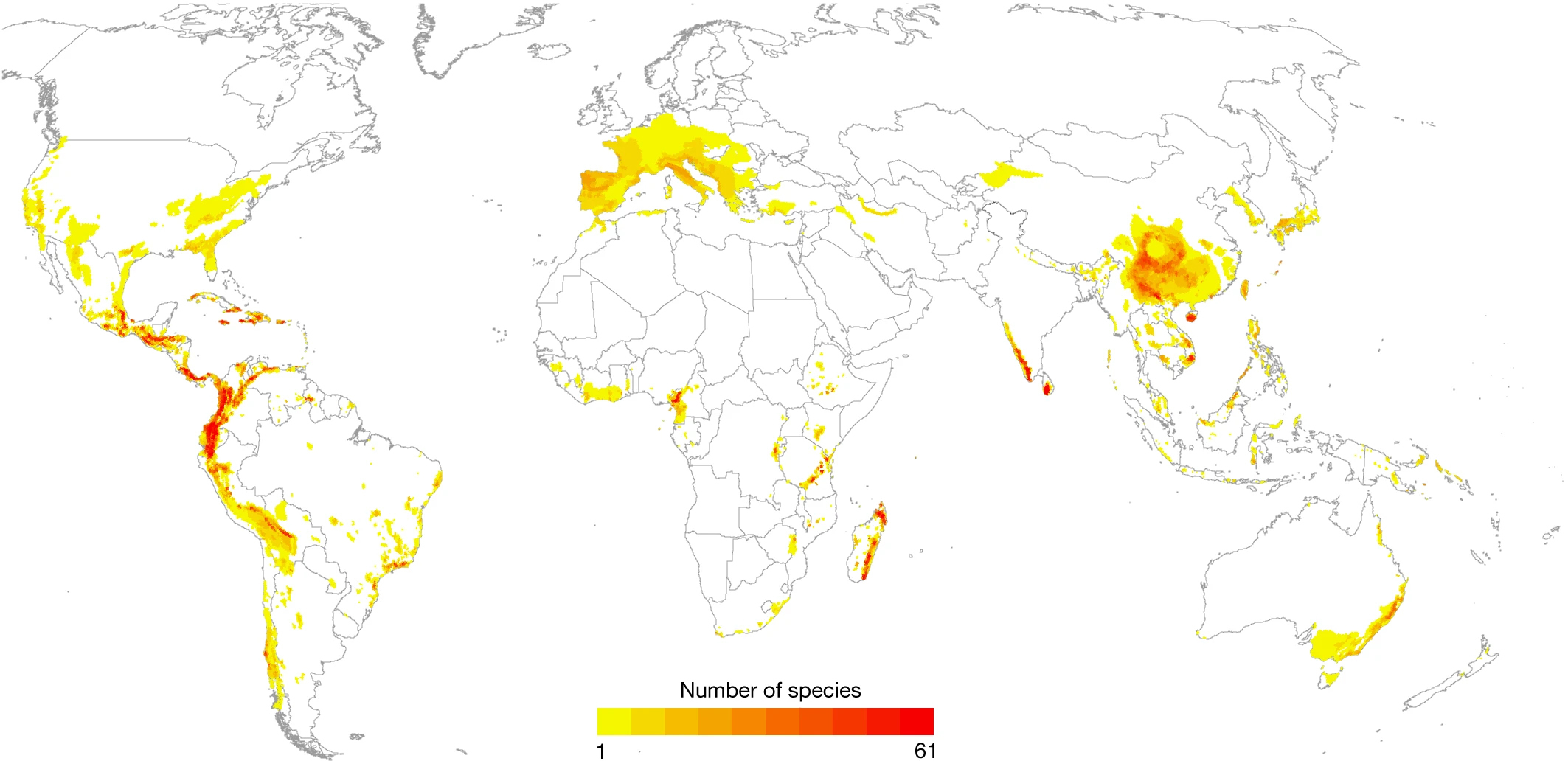

Amphibians, frequently heralded as key indicators of freshwater health, are confronting significant challenges. A recent study published in the esteemed journal Nature reveals that a staggering 41% of amphibians are on the brink of extinction. This alarming statistic makes amphibians the most endangered group among vertebrates, surpassing mammals (26.5%), reptiles (21.4%), and birds (12.9%). Primary threats to their survival include climate change, habitat degradation, and diseases, emphasizing the urgent environmental shifts our world is facing.
“It’s heartening to see many species in the Western Ghats moving away from the brink, thanks to thorough research, increased awareness, and dedicated conservation efforts.”
Dr Sandeep Das
Dr. Sandeep Das, National Postdoctoral Fellow in the Department of Zoology at the University of Calicut and Aranyakam Nature Foundation Trustee, is one among the 8 authors from India in the study. Collaborating with global experts from around the world, Dr. Das’s insights into the plight of amphibians, especially those in the biodiverse-rich region of the Western Ghats, have added invaluable depth to the study.
The new report, Global Amphibian Assessment 2 (GAA2), comes more than two decades after the first edition and underscores the precarious state of amphibians worldwide. With their intrinsic reliance on freshwater sources, consistent climatic conditions, and moisture, amphibians are particularly sensitive to environmental changes, making them vital barometers of ecosystem health. Lead author Jennifer Swandby stressed the study’s significance, saying, “We cannot ignore these findings any longer. Protecting these habitats and the unique species within them is paramount.”
Highlighting the Western Ghats, Dr. Das noted that over 90% of its amphibian species are not found anywhere else in the world. He added, “It’s heartening to see many species in the Western Ghats moving away from the brink, thanks to thorough research, increased awareness, and dedicated conservation efforts.”

The distribution of 2,873 globally threatened amphibian species.
The darker colours correspond to higher species richness. The colour scale is based on 10 quantile classes. Maximum richness equals 61 species. The cell area is 865 km2. One species was excluded because no spatial data were available. Source: Nature
The global resonance of the study was emphasized further when renowned environmentalist and actor Leonardo DiCaprio shared the research on his social media platforms. He featured a captivating image of the galaxy frog, a rare amphibian endemic to the Western Ghats, captured by Dr. Das.
As the threats to amphibians intensify, studies like GAA2 become crucial roadmaps for conservationists worldwide. Aranyakam Nature Foundation takes immense pride in Dr. Das’s contributions and remains committed to bolstering efforts that protect our planet’s rich biodiversity.
Luedtke, J.A., Chanson, J., Neam, K. et al. Ongoing declines for the world’s amphibians in the face of emerging threats. Nature (2023). https://doi.org/10.1038/s41586-023-06578-4
